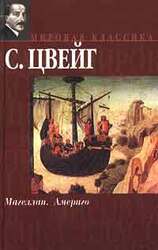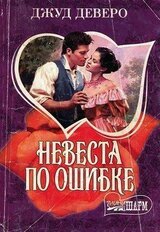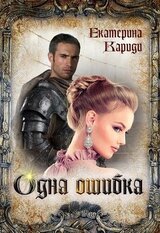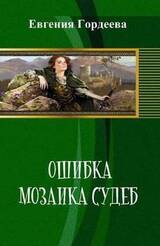Startling new scientific findings
on life after death! The most
important investigation ever published.
«Exciting, informed, memorable!»
—Publishers Weekly
THE
ROMEO
ERROR
A Meditation on
Life and Death
by Lyall Watson
author of the acclaimed bestseller
SUPERNATURE
When Romeo Found Juliet Pale
and Lifeless in the Tomb,
He Assumed She Was Dead.
ROMEO, OF COURSE, WAS WRONG.
Yet how many times is this same error repeated
each day on earth? How many of those whom we
see as dead are really alive? And even more
important, is what we think of as death itself
merely an error in perception, a cruel and costly
mistake?
Lyall Watson, a former assistant to noted natural-
ist Desmond Morris and a renowned scientist and
author in his own right, has explored both the in-
tellectual world of science and the psychical world
of the most eminent mystics to put together the
pieces of one of mankind’s most ancient puzzles.
The result is a work destined to end once and for
all the tragic failure of vision that Lyall Watson
calls —
THE ROMEO ERROR
THE ROMEO
ERROR
A MEDITATION ON LIFE AND DEATH
______________________________
LYALL WATSON
A DELL BOOK
Published by
DELL PUBLISHING CO., INC.
1 Dag Hammarskjold Plaza
New York, NY 10017
Copyright © 1974 by Lyall Watson
All rights reserved. For information address,
Doubleday & Co., Inc., New York, NY 10017.
Dell ™ TM 681510, Dell Publishing Co., Inc.
Reprinted by arrangement with Doubleday & Co., Inc.
Printed in the United States of America
First Dell printing — May 1976
Contents
INTRODUCTION 7
PART ONE … BODY 13
Chapter One: LIFE and the origin of death 19
Chapter Two: DEATH regarded as a disease 38
Chapter Three: DYING as part of the death cycle 61
PART TWO … MIND 85
Chapter Four: PERSONALITY and the body 92
Chapter Five: ENLIGHTENMENT as a biological process 111
Chapter Six: DISSOCIATION between body and mind 129
PART THREE … SOUL 147
Chapter Seven: SURVIVAL without the body 153
Chapter Fight: POSSESSION within other bodies 174
Chapter Nine: MiRACLES and other realities 198
CONCLUSION 219
BIBLIOGRAPHY 221
INDEX 239
Introduction
When I was ten years old, I went off by myself one day to a wooded ravine near our home where one could stand on the edge of a cliff and bounce a wonderful echo off a curved wall of granite on the far side of the stream. I had been planning the excursion for weeks and finally worked up enough courage actually to do it — to stand there all on my own, high above the trees, and shout as loud as I could the rudest and most forbidden word I knew. Now, a quarter of a century later, I cannot even remember what the word was, but I shall never forget the feeling. Writing a book about death makes me feel that way again.
Despite our new freedoms, death is still an awkward subject for discussion. Every day we display further evidence of our discomfort with it and of our continuing uncertainty about the relationship of life and death. With the one hand we try to put the dead «to rest»; we console and propitiate them and attempt to avert their wrath. With the other we try to simulate life by painting up their faces in a forlorn attempt to rekindle some last vital spark.
Our ambivalence is manifest in almost every field. We say that science and medicine are giving us dominion over death, but we really still believe that nothing we can do will change the date of that appointment in Samarra. There is a sense of rightness and inevitability in the story of the soothsayer Chalchas who died of laughter at the thought of having outlived the predicted hour of his death. If anything, our new technology only makes the dilemma even more difficult to bear. In September 1973 Samuel Moore was certified dead in Oakland, California, with a bullet in his brain. His heart was removed still beating and shipped by helicopter to Stanford, where it was transplanted into another breast. When the gunman, Andrew Lyons, was charged a month later with Moore’s murder, his lawyer insisted that the charge be altered to assault with a deadly weapon on the grounds that Moore could not be dead if his heart was still beating. That part of the case, at least, has now been settled, because the heart in question has finally stopped beating altogether, but there is still some doubt as to whether the murder was done by the assailant or the surgeon.
As a biologist I find this kind of ambiguity embarrassing. It may be old-fashioned, but I believe that a student of life should know where it starts and have some idea of how it ends. Hence this book. It starts from first principles and develops along the lines of a debate, as much for the sake of my own sanity as for anyone else’s edification. I suspect that there are logical and biological flaws in many levels of my argument, but for the moment I am content to leave them there, simply because this is an argument and I hope that it will stimulate further discussion.
Exactly two years ago, I collected a ragbag of biological loose ends together and created a patchwork pattern that went some way toward establishing an objective natural history of the supernatural. I tried not to set any artificial limits to the field it covered, but looking back now, I can see where I drew my mental lines. If Supernature was my «life book,» then this is its companion volume on death. I start with what seems to me to be the most basic dilemma in the field, our inability to distinguish life from death, and find that when this is resolved, it merely opens up a number of other problem areas — and every one of them turns out to be something that I had previously refused to consider.
This is not an answer book. It is really not even a question book, but an attempt to establish some sort of solid scientific foundation that will help to formulate the right kinds of questions. When I talk to friends with an interest in the occult, or to almost anyone under the age of twenty-five, about reincarnation or astral bodies, they just nod reassuringly. And when I persist and demand to know how they can be so certain that these phenomena exist, they simply say that that’s how things are. I suspect that they may be right and I envy their ability to take so much on trust, but I cannot do so. I carry the heavy handicap of ten years’ training in the sciences, and I feel compelled to search for some way of reconciling scientific investigation and mystic revelation. I am beginning to appreciate that there are limits to the scientific method and that it is impossible to observe some things without substantially changing them in the process. To observe is to modify; and to describe and understand is to alter radically. Atomic physics now recognizes that if something cannot be measured, the question of whether or not it exists is meaningless. I can accept this, and where it becomes necessary, I am prepared to abandon the traditional scientific approach. I find that most of the time my line of investigation brings me in the end directly to the place where my mystic friends have been operating all along, but unlike many of them I know exactly where I am, because I can look back along the line and see how I got there.
So for those who find it difficult to come to terms with other realities, I offer this imperfect guide that starts out in errancy and ends on the edge of a
n awesome new frontier. I hope that you will find, as I have, that death can be turned into a lifeline.
Lyall Watson, Ph.D.
Bali, Indonesia, 1973
They said that JULIET was dead.
NURSE: She’s dead, deceas’d, she’s dead!
LADY CAPULET: She’s dead, she’s dead, she’s dead!
CAPULET: Her blood is settled and her joints
are stiff;
Life and these lips have long been
separated.
ROMEO took their word, and his life . . . but he was wrong.
Or is the error ours?
PART ONE
BODY
The Romeo Error is not rare, nor is it peculiar to distraught Latin lovers. It was made by even the most celebrated of all anatomists. At the height of his career in the middle of the sixteenth century, Andreas Vesalius was dissecting the body of a Spanish nobleman when the «corpse» came back to life. [213*] The injured don made a complete recovery, but Vesalius was reported to the Court of the Inquisition and sentenced to death for his error. Not long afterward, the Grand Inquisitor himself is said to have recovered consciousness on the table of another anatomist. [267] This time the error came to light too late to save his life.
* All numbers refer to entries in the Bibliography.
Others have been more fortunate. The Reverend Schwartz, an early Oriental missionary, was roused from apparent death in Delhi by the sound of his favorite hymn. The congregation celebrating the last rites became aware of their error when a voice from the coffin joined in the chcrus. [102] Nicephorus Glycas, the Greek Orthodox bishop of Lesbos, caused comparable consternation among his devout followers. After two days lying in state in his episcopal vestments in the church at Methymni, he suddenly sat bolt upright on the metropolitan’s throne, glared at the line of mourners passing by, and demanded to know what they were staring at. [299]
There are similar reports in Plato’s dialogues, in Plutarch’s lives, and in the natural histories of Pliny the Elder, but it would be wrong to assume that the error no longer occurs. In 1964 a postmortem operation at a New York mortuary was disrupted just as the first cut was being made, when the patient leaped up and seized the surgeon by his throat. This doctor paid for the error with his life — he died of shock.
The word «autopsy» literally means «seeing with one’s own eyes,» but there seems to be such genuine difficulty in correctly diagnosing some cases of death that most countries have laws that forbid hasty funerals. The Italian poet Francesco Petrarch lay in Ferrara apparently dead for twenty hours and would have been buried on the completion of the time laid down by local law, in just four more hours, if a sudden change in temperature had not made him sit up in his bed. He complained of the draft, reprimanded his attendants, and went on to live another thirty years and write some of his finest sonnets. [200] Some countries even have waiting rooms in their mortuaries. In Munich there is an enormous Gothic building where the dead once lay in long rows all connected by cords leading to bells in the central office of the caretaker. It seems that his sleep was disturbed sufficiently often to make the arrangement worthwhile.
There is, of course, a limit to the amount of time a corpse can be left lying around, and so various tests have been devised in an attempt to avoid errors. One of the oldest of these is the application of a lighted taper to parts of the body on the valid assumption that skin no longer blisters once circulation has ceased. This worked for Luigi Vittori, a carabineer in the service of Pope Pius IX, who was certified dead of asthma in a Roman hospital until a second, more skeptical, doctor held a flame to his face. Luigi eventually shuddered back to consciousness and resumed his duties at the Vatican, but for the rest of his life he carried the memento mori of third-degree burns on his nose. [200]
Dr. Louis Icard, of Marseilles, has produced a more modern variation of this test. He injects a dilute solution of fluorescine, which produces a temporary green cast to the cornea of the eye in living subjects, but has no effect after death. [301] In the United States atropine, which normally causes dilation of the pupil of the eye, has been used as a similar critical test in cases where the doctor was in doubt. In Britain coroners are experimenting with a simple porta- ble cardiograph that will register even faint electrical activity in the heart. [303] When the new instrument at Sheffield mortuary was used for the first time on February 26, 1970, it detected signs of life in a twenty-three-year-old girl certified dead following an overdose of drugs. [304]
There are some tests that work well, but the problem with all of them is that a negative result means nothing. And in Britain alone over 600,000 people die each year without any kind of test at all. A strong possibility exists that even in countries where death has to be certified and registered, a large number of people are being buried before their time. One estimate suggests that the figure may be as high as 2,700 each year in England and Wales, but it is worth noting that this survey was made in the late nineteenth century when concern about premature burial was at its height. [211]
The nineteenth-century English novelist Wilkie Collins left a note by his bedside each night specifying certain precautions that should be taken before it be assumed that he was dead. Hans Christian Andersen never went out without a similar note in his pocket. In the late nineteenth century Colonel Edward Vollum, of the United States Army Medical Corps, proposed a plan whereby anyone being buried without being embalmed should have a bottle of chloroform within easy reach. [77] In the 1850s Count Karnicé-Karnicki, chamberlain to the Czar, invented a more humane device consisting of a tube leading from the coffin to a box on the surface which could not be opened from the outside but would spring open at the first sign of life from within, allowing air to enter, raising a pole with a flag on the end, and setting off a bell and a flashing light to summon assistance. The count’s plan was to produce these machines for sale to cemeteries, which would rent them out to the recently interred for a cautionary period of fourteen days. [102]
This kind of concern seems to have arisen largely because of the activities of a group of professional body snatchers known as the resurrection men. In Britain these entrepreneurs dug up and sold the recently dead to the Barber Surgeons Company who received an official grant of only four corpses a year, but paid top prices for additional subjects and asked no embarrassing questions. The trade became public in 1824 when John Macintire, who was certified dead and properly buried in his local churchyard, woke up on the dissecting table at a London medical school when the demonstrator’s knife pierced his chest. [77] Following an inquiry, guards were put on duty at cemeteries to ensure that the newly buried stayed there — and it was not long before several other premature burials were discovered.
In 1856 the grave of a man was opened after knocking sounds were heard, but it took so long for permission to be obtained from the priest and the poiice that by the time the rescuers reached the coffin the inhabitant was indeed dead. The fact that he had been buried alive was obvious from the wounds the man had inflicted upon himself by biting his shoulders and arms. [108] In 1893 a young woman who had apparently died in late pregnancy was exhumed following a report of noises from the grave. The authorities found her torn and bleeding following a frantic struggle to free herself, a battle that resulted in the birth of her baby but that ended in the death by suffocation of them both.
In times of war and plague, when thousands of bodies had to be disposed of as quickly as possible, many were buried alive. When medical science was rudimentary or nonexistent, mistakes must often have been made. But today, with people being certified by attendant doctors and prepared for disposal by professional undertakers, errors would seem to be impossible. And yet, on December 11, 1963, thirty-five-year-old Elsie Waring collapsed at her home in London and was taken to the Willesden General Hospital, where three doctors certified her as dead on arrival. Ten hours later, she gasped and began to breathe again while being lifted into her coffin at Kilburn Public Mortuary. [300]
The Romeo Error is still being made — and it will conti
nue to be made because the differences between life and death are blurred by our current inability to define either state with any clarity.
Chapter One: LIFE and the origin of death
When a child first opens its eyes, it sees nothing. The womb is dark, because what little light filters through the mother’s distended skin is soon dispersed by the amniotic fluid. During the last four months of gestation, the wrinkled face of the baby squints into this liquid gloom, seeing nothing and hearing very little but beginning to explore the world with its hands. The fingers are fully formed, each with a perfect miniature nail, and they flex and bend, grasping at each other and the walls of the womb. One of the first things it finds is hair, long and soft and silky, growing from its owns arms and legs. In this lanugo babies luxuriate, twining and stroking, practicing the grip that once in an earlier stage held them firmly to their mother’s hairy breast as she fled through the tops of the trees from terrors we can only guess at. Then, near the end of pregnancy, the lanugo disappears without trace, and its place is taken by the short soft golden down of vellus with which each human child is born.
Our time in the uterus is not given over entirely to growth. Death is there as well. Embryonic cells divide and grow and group themselves into meaningful arrays, but some of these are transitory, just organic ghosts flickering through the memories of evolution in search of the proper pattern. Gills and tails and body fur no longer serve a purpose, so they have to be unassembled. Parts of us begin to die long before we are born. Cells and tissues replace one another in a sustained dynamic process, with life and death so mutually dependent that they are almost indistinguishable. Death is an essential part of even the newest life, and yet death has become so unspeakable that it is not even mentioned in the index of any textbook on basic biology.
Top reviews from the United States
There was a problem filtering reviews right now. Please try again later.
Reviewed in the United States on August 14, 2010
Wow…wow wow wow…wow. Talk about a bombshell of information.
If you are an avid reader, you had better get your helmet on because you are going to war with this one. With over 300 citations in a 231 page book, you are in for a VERY bumpy ride. I would read 5 pages at a time so I could sit back and reflect on what I read before going on.
Lyall Watson’s masterpiece talks about everything. Plant conciousness, weighing the soul, sex kills, surgery with hands only, prayer healing, telepathy, curses from voodoo…..and all of this stuff TRUELY IS NOT RELATED, much like this book tries to sell itself on…yet the genius Lyall Watson brings it all together perfectly to create a great case for God.
While I do not agree with the outcome of the book (I wont spoil it for you), I will definately be citing this book HEAVILY in my next book. You better believe it.
..come on people..300 citations..that is amazing. If you are not a believer in God, get ready for (Erich von Daniken’s saying) A GOD SHOCK!
5/5
John McAdam, Author of:
«Were Ancient Gods From Other Planets?»
«Am I Mad Or Coherent?»
Reviewed in the United States on December 28, 2019
well researched account of modern literature, and independent analysis
Reviewed in the United States on July 4, 2012
This is a great thought provoking book first read 30+ years ago. Purchased from a KMart discount table. Out of print, topics of discussion with others prompted a search. Someone had it, the price was good, and service excellent.
With Amazon, few products are really no longer available and lost to time.
Reviewed in the United States on March 2, 2005
Another excellent book by Dr. Watson (Also known as The Biology of Death). Very readable and accessible for those without a scientific background. An interesting discussion of our psychological and social attitudes toward death as well as past traditional and modern accounts of how the point of death is decided (despite modern technology there is still controversy). Fascinating and intriguing anecdotes and scientific studies relating to death in the human, animal and plant kingdoms. Dr. Watson delves into the biology of death in such an open minded way where many other scientists would not dare to consider or discuss in print.
I do not believe it will threaten any religious teachings but rather add insight into the biology of death. There is some very thoughtful and interesting discussion about life after death, ghostly apparitions and some esoteric thoughts related to death but this book is not for those primarily interested in near death experiences, ghosts, or the after life, but rather for those with a keen interest in life and all of its wonders.
Chapter List:
PART ONE : BODY
1. LIFE and the origin of death
2. DEATH regarded as a disease
3. DYING as part of the death cycle
PART TWO : MIND
4. PERSONALITY and the body
5. ENLIGHTENMENT as a biological process
6. DISSOCIATION between body and mind
PART THREE: SOUL
7. SURVIVAL without the body
8. POSSESSION within other bodies
9. MIRACLES and other realities
An extensive bibliography is included (18 pages in the hard cover edition) and a detailed index.
Friends who noticed I was reading about death reacted with surprise and concern — they thought it morbid — however this book is anything but morbid. It is uplifting, fascinating and despite a few horrifying anecdotes about misdiagnosed death (just make sure the person is actually dead!) that still apply today, the book is thoroughly enjoyable. Anyone who thinks they or someone or something (plant or animal) they know may die one day should read this book. This book may change your fear of death into one of intrigue and even hope. The book left me with the impression that death is not the end and life is more wondrous than I can even imagine!
Top reviews from other countries
5.0 out of 5 stars
What happens when we die
Reviewed in the United Kingdom on June 14, 2014
. Lyall Watson’s book he wrote after «Supernatur» was called “Romeo Error” which starts with what happened to Romeo when he comes to find Juliet apparently dead. In the start of the book Lyall Watson starts by saying “They said that Juliet was dead.
Nurse “She’s dead, deceased, she’s dead.” Lady Capulet “She’s dead, she’s dead, she’s dead!” Capulet “Her blood is settled and her joints are stiff; life and these lips have long been separated”. Romeo took their words >> but he was wrong. Then at the end of this introduction Lyall Watson add “or is the error ours?”
But Juliet wasn’t dead but had taken a drug that put her into a death like trance and Romeo had returned to the grave in which he thought Juliet was a corpse while she was only drugged. Romeo kills himself thinking her dead and she awakes to find her lover Romeo dead stabs herself as well. This the Romeo error Lyall Watson goes on to devote his book on cases where people awake after being pronounced dead.
It’s an early popular book of the death protest and one of first book that shows a lack of what happens when we die.
5.0 out of 5 stars
Good to replace a lost copy
Reviewed in the United Kingdom on May 21, 2014
This is a fascinating book, and my original copy went missing years ago. It has loads of interesting info — like the long-ago Pope who’d been pronounced dead by all his doctors and a roomful of people; and sat up in his coffin two days later and demanded to know who all these people were (mourners paying their respects!).
5.0 out of 5 stars
This book only makes sense if you look at all …
Reviewed in the United Kingdom on January 20, 2018
This book only makes sense if you look at all the Watson books I have bought. This was the 3rd after Supernature
5.0 out of 5 stars
Brilliant book
Reviewed in the United Kingdom on May 9, 2018
Brilliant book — reading it again after originally read in the 1970s
5.0 out of 5 stars
great condition
Reviewed in the United Kingdom on March 12, 2014
had this book some years ago in paperback and wanted to read it again. The copy sent to me was in 1st class condition
ОШИБКА РОМЕО
Кормилица
Джульетта померла! Она скончалась!
Леди Капулетти
Джульетты нет! Джульетта умерла!
Капулетти
Пустите! Быть не может! Ни кровинки.
Окоченела. Холодна, как лед.
О господи, она давно без жизни!
Все кончено! Как на поле мороз,
Смерть пеленой лежит на этом теле!
Поверив их словам, Ромео расстался с жизнью… но он ошибся. А мы порой не ошибаемся?
Однажды десятилетним мальчишкой я убежал в поросшее лесом ущелье, неподалеку от нашего дома. Там, на краю крутого обрыва, можно было слушать великолепное эхо, доносившееся с отвесной гранитной стены по ту сторону потока. Я долго готовился к путешествию и наконец, набравшись смелости, пустился в путь, и вот я здесь, совсем один, высоко над деревьями выкрикиваю что есть сил самое грубое и самое запретное из всех известных мне слов. Сейчас, четверть века спустя, я не могу даже вспомнить это слово, но никогда не забуду, что я тогда испытал. Когда я писал эту книгу о смерти, я чувствовал то же самое.
Хотя мы стали более свободны, смерть по-прежнему – запретная тема. Сталкиваясь с нею, мы постоянно испытываем неловкость из-за неопределенности отношений между жизнью и смертью. С одной стороны, мы пытаемся «упокоить» мертвых, умиротворить и умилостивить их, страшась навлечь на себя их гнев; с другой стороны, мы пытаемся симулировать жизнь, раскрашивая их лица в тщетной попытке сохранить последнюю искру жизни.
Мы проявляем непоследовательность на каждом шагу. Мы говорим, что наука и медицина дают нам власть над смертью, на самом же деле убеждены, что ничто на свете не в силах изменить день нашего свидания в Самарре (то есть с нашей смертью – прим. перев.). Чувство справедливости и неотвратимости смерти присутствует в рассказе о прорицателе Калханте, умершем от смеха при мысли, что пережил предсказанный им час своей смерти. Успехи техники лишь усложняют проблему жизни и смерти.
Я как биолог смущен. Возможно, я старомоден, однако мне кажется, что тот, кто изучает жизнь, обязан знать, где она начинается и где кончается. Вот почему я написал эту книгу. Она начинается с первооснов и далее следует в направлении, которое подсказывает мне здравый смысл, желание поделиться тем, что я знаю. Я понимаю, что на всех уровнях мое изложение не лишено логических или биологических погрешностей, однако я со спокойной совестью оставляю их в тексте просто потому, что эти аргументы, надеюсь, послужат стимулом к дальнейшему обсуждению вопроса.
Ровно два года назад я собрал множество не вписывающихся в общую биологическую схему фрагментов и соорудил из них нечто вроде лоскутного одеяла, сделав шаг в сторону объективной естественной истории сверхъестественного. Я не хотел искусственно ограничивать тему моих размышлений, но теперь, оглядываясь назад, понимаю, в каком направлении двигалась моя мысль. Если «Сверхприрода» была книгой о жизни, то парная книга посвящена смерти и последующей жизни. Я начинаю с того, что представляется мне главной дилеммой: с нашей неспособности провести различие между жизнью и смертью – и обнаруживаю, что с решением этой дилеммы сразу же открывается ряд других проблематичных областей, каждая из которых ранее исключалась из рассмотрения.
Это не книга ответов. И даже не книга вопросов, а попытка заложить нечто вроде научного основания, которое поможет нам правильно сформулировать вопросы. Когда я беседую с друзьями, сведущими в оккультных науках, или же с теми, кому нет двадцати пяти, о перевоплощении или астральных телах, они лишь утвердительно кивают головой. Когда же я настойчиво пытаюсь выяснить, почему они так уверены в существовании этих явлений, они просто-напросто отвечают, что такова действительность. Я подозреваю, что они правы, и завидую их способности принимать многое на веру, но я устроен иначе. У меня за плечами тяжкий груз десятилетних научных занятий, и я не могу не пытаться примирить научное исследование с мистическим откровением. Я начинаю понимать, что научный метод имеет границы и что некоторые вещи невозможно наблюдать, не внося в них значительных изменений в процессе наблюдений. Наблюдать – значит менять слегка, а описывать и понимать – значит менять существенным образом. Современная атомная физика утверждает, что если что-либо невозможно измерить, то ставить вопрос о его существовании не имеет смысла. Я могу с этим согласиться и в случае необходимости готов отказаться от традиционного научного подхода. Я понимаю, что ход моего исследования почти всегда приводит меня прямо туда, где с самого начала находились мои мистически настроенные друзья, однако, в отличие от них, я точно знаю, где нахожусь, ибо могу, оглянувшись на пройденный путь, увидеть, откуда я пришел.
Итак, для тех, кому нелегко быть на короткой ноге с иной реальностью, я предлагаю эту несовершенную схему путей, которые берут начало в заблуждении, а кончаются на острие новой пугающей границы. Надеюсь, что вы, как и я, поймете, что смерть может стать продолжением линии жизни.
Ошибка Ромео
Очень интересный труд биолога Лайелла Уотсона посвященный изучению проблемы жизни и смерти. Автор попытался описать с точки зрения биологии где начинается жизнь и где она заканчивается, и заканчивается ли вообще. В этой работе, буквально доказывается существование второй замкнутой системы (ментальные и астральные тела) человека. Работа заслуживает интереса, благодаря стремлению автора, дать логически сформулированные ответы на поставленные вопросы и при этом не вдаваться в мистификацию и голословные утверждения.
Скачать книгу «Ошибка Ромео»
О книге
В современном обществе в условиях постоянного стресса и рутинных забот, иногда так хочется отвлечься и поднять своё душевное состояние. Чтение книг во все времена помогало людям побороть хандру. Обладая волшебной способностью погружать читателя в другую жизнь, книги хотя бы на время дают шанс позабыть о личных проблемах и переживаниях.
Читатели по достоинству оценят книгу Уотсон Лайелл «Ошибка Ромео», написанную в жанре документальная литература. В книге автор делится с нами своими размышлениями на многие злободневные темы современности и взаимоотношений между людьми. Интересные по характеру персонажи, увлекательная сюжетная линия и красивый слог произведения несомненно захватят читателя.
Данное произведение не только обогащает эмоционально, но и заставляет задуматься над многими интересными фактами. Тема, затронутая автором, берет за душу и надолго оставляет читателя под впечатлением. Читатели выражают мнение, что это произведение не может оставить равнодушным и запомнится надолго. Количество страниц в книге составляет 45, она была выпущена издательством « политической литературы» в 1991 году. Книгу «Ошибка Ромео» можно скачать на нашем сайте в формате epub, fb2 или читать онлайн.
Популярные книги жанра «Документальная литература»
С этой книгой читают
По ошибке! Лопа Ана
Полину по ошибке воруют вместо ее подруги из влиятельной семьи. Кому довериться? На чью помощь рассчитывать, если тебе никто не верит и все против тебя? Может найти…
Ведьма по ошибке Ольга Олие
Как мало мы знаем о тех, кто нас окружает. Как часто страдаем из-за этого. Друзья становятся врагами, незнакомые люди протягивают руку помощи. Наверное я должна быть…
Невеста по ошибкеДеверо Джуд
Богатому плантатору из Нового Света Клэйтону Армстронгу приглянулась английская аристократка Бьянка. Ее отец против брака дочери с «диким американцем»? Ну что ж,…
10 глупейших ошибок, которые совершают людиФриман Артур, Девульф Роуз
Умные люди — тоже люди. А человеку свойственно ошибаться. Наверняка в течение своей жизни вы допустили хотя бы одну из глупых ошибок, описанных в этой книге. Но…
Моя любимая ошибка Кэмерон Челси М.
Когда Хантер Заккарелли появляется перед ее дверью, заявляя что он их новый сосед по комнате и именно ей придется жить с ним, потому что другая спальня уже занята ее…
Одна ошибкаЕкатерина Руслановна Кариди
Десять лет назад отец просватал Изабеллу за соседнего короля. Жених уехал, даже не взглянув на невесту, и за все время ни разу ею не поинтересовался. И вдруг письмо в…
Ошибка. Мозаика судеб Гордеева Евгения Александровна
Кем-то судьба играет, кто-то играет судьбой… Что лучше? Кто ж его знает.











